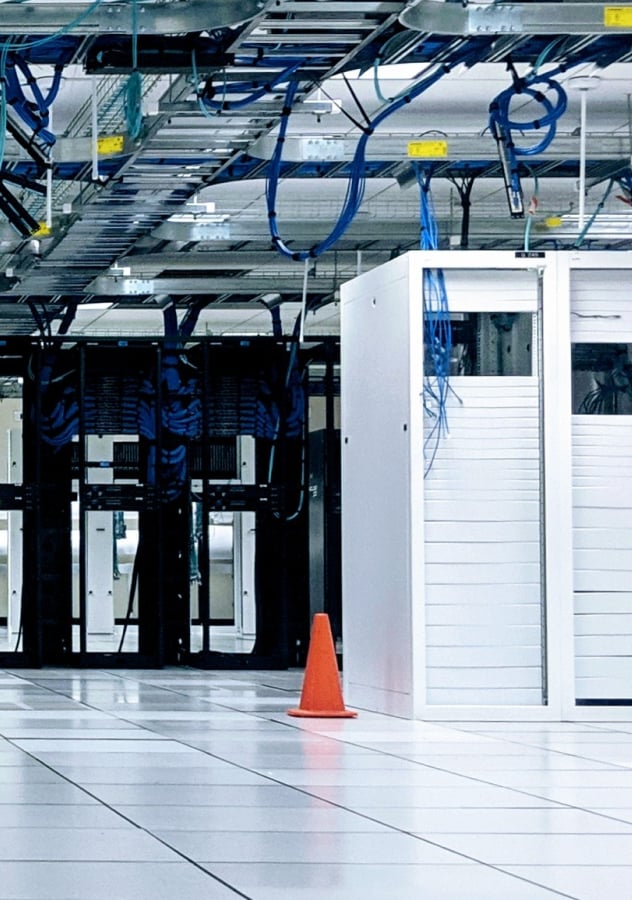Switching to SIP trunking cuts voice spend by 30–50% on average, according to multiple industry tallies of business VoIP deployments. That’s not a marketing claim; independent round-ups of real implementations place typical savings in this band for companies moving away from PRI or analog lines.
Legacy telephony drains budgets in ways finance teams can’t ignore: per-line rentals, long-distance markups, and maintenance contracts stack up quickly. In the UK alone, regulated trackers still show line rental as a distinct, recurring charge, about £19/month for a single line in late 2024, before a minute of calling even happens. Multiply that across locations and you get structural waste.
SIP changes the equation. Calls ride over IP, capacity scales by channel rather than fixed line blocks, and international routing follows least-cost paths. Organizations also consolidate vendors and invoices, which pulls administrative overhead down with the call bill.
DIDlogic sees this pattern at carrier scale. As a global SIP provider, the team benchmarks thousands of routes daily and watches customers trim both usage charges and the “hidden” costs, idle lines, site-by-site contracts, emergency break-fix visits, that never should’ve been there.
This guide shows where the savings come from, why they persist, and how to model payback with concrete numbers. It opens with the baseline economics of legacy lines versus SIP trunking, then breaks the reductions into direct and indirect buckets, and closes with practical steps to lock the gains in. Move on to the first section to compare the cost structure head-to-head.
The Economics of Legacy Telephony vs. SIP Trunking
Understanding where the savings come from starts with seeing how traditional telephony drains money long before a call even connects. Old systems carry embedded inefficiencies, physical infrastructure, vendor dependencies, and rigid pricing, that simply don’t exist in SIP trunking.
The Hidden Overhead of Traditional Systems
Traditional phone systems look predictable on paper but hide several recurring costs that rarely show up on a single invoice. Businesses pay line rentals for every physical connection, maintain PBX hardware that depreciates quickly, and face long-distance markups that balloon operating costs. Add to that vendor lock-in, where expanding capacity or adding new sites means signing another multi-year contract, and the total cost of ownership grows fast.
Below is a simplified cost comparison:
| Cost Category | Traditional Telephony | SIP Trunking |
| Line Rental | $25–$50 per line/month (average AT&T and BT enterprise rates, 2024) | $10–$15 per SIP channel/month |
| Hardware & Maintenance | On-prem PBX hardware + $2,000–$10,000/year in maintenance contracts | Cloud-based or virtual PBX; minimal upkeep |
| Long-Distance & International Calls | $0.10–$0.25/min on average | $0.01–$0.03/min using least-cost routing |
| Scaling Capacity | Requires new hardware or line installation | Add or remove channels instantly |
| Vendor Management | Multiple contracts for data, voice, and hardware | Unified provider, one bill |
Even small companies can find themselves paying 30–40% of their telecom budget just to maintain existing lines and hardware, a sunk cost with no productivity return.
Why SIP Upends the Cost Structure
SIP trunking eliminates physical lines altogether. Calls are transmitted over IP networks, so capacity isn’t tied to copper or fiber pairs. Businesses move from owning depreciating hardware to using a service model, converting capital expenditure (CapEx) into operational expenditure (OpEx).
That shift changes budgeting and scalability. Instead of over-provisioning for peak usage, companies pay only for active channels and real call time. Studies by Gartner and VoIP Review platforms report 25–50% average reductions in monthly voice bills, while international call costs can drop by as much as 90% when routed via optimized SIP paths.
Regulatory and tax advantages also add to the appeal. In several EU and APAC markets, unified IP communication services fall under digital service taxation, not legacy telecom frameworks, cutting administrative overhead and compliance costs.
In short, SIP trunking removes the outdated economic model that makes voice connectivity an expense center, replacing it with a scalable, software-driven utility that grows or contracts with actual business demand.
6 Direct Ways SIP Trunking Cuts Communication Costs
The financial advantage of SIP trunking isn’t abstract, it shows up line by line on monthly telecom statements. Each mechanism of savings stems from specific efficiencies: network consolidation, smarter routing, flexible scaling, and lower operational overhead.
1. No More Physical Lines or PBX Overhead
Every traditional phone line comes with fixed rental fees and hardware dependency. SIP replaces those with virtual channels running over existing internet infrastructure.
- Cost comparison: physical line, $25–$50/month; SIP channel, $10–$15/month (FCC and Ofcom enterprise rate data, 2024).
- Why it matters: a 50-seat office can save more than $20,000 annually just by removing redundant copper lines.
- On-prem PBXs also fade out of budgets, hosted SIP platforms or virtual PBXs reduce maintenance calls and spare-part costs.
2. Lower Call Rates, Especially International
Traditional carriers apply distance-based tariffs and legacy interconnect fees. SIP trunking uses least-cost routing to choose the cheapest and most direct path for each call.
- Example: U.S. → UK calls that once cost $0.15/min on legacy PSTN routes drop to around $0.02/min with SIP.
- For multinational teams, that’s tens of thousands in yearly savings on conferencing and client outreach.
3. Scalable, On-Demand Capacity
Instead of buying excess lines “just in case,” SIP lets businesses scale channel counts instantly.
- A call center can move from 30 to 200 channels for a seasonal campaign, paying only for the active period.
- No physical installation delays or idle capacity costs.
4. Integration with Unified Communications
SIP supports voice, video, and instant messaging within one framework, one provider, one bill.
- Consolidating collaboration tools and voice infrastructure avoids overlapping subscriptions (e.g., separate Zoom, Teams, and PBX fees).
- On average, unified communication integration cuts duplicated service costs by 20–25% across enterprise deployments.
5. Lower Maintenance & IT Costs
Remote configuration, automatic failover, and vendor-side updates reduce the internal IT burden.
- Managed SIP services typically shrink telecom-related IT hours by 30–40% per user, freeing staff to focus on higher-value tasks.
- No site visits for line repairs or PBX troubleshooting.
6. Pay Only for What You Use
Traditional contracts bill per line regardless of usage. SIP trunking bills per active channel or by metered minute.
- Small teams avoid paying for unused capacity; enterprises align expenses directly with call volume.
- Predictable, usage-based billing simplifies cost forecasting and financial reporting.
These six levers combine to make SIP trunking one of the few telecom upgrades that pays for itself within months. The next section explores the indirect savings that come from operational efficiency, the often-overlooked benefits that amplify long-term ROI.
Operational Efficiency = Indirect Cost Savings
Direct savings tell only half the story. SIP trunking also reduces hidden operational costs, the kind that stem from inefficiency, downtime, and fragmented systems. When communication runs on flexible IP networks instead of rigid hardware, productivity rises while wasteful processes disappear.
Remote-Ready Without Extra Spending
The post-2020 hybrid shift forced companies to rethink how teams stay connected outside office walls. Traditional phone systems needed call forwarding, separate mobile plans, or VPNs to keep remote employees reachable, all of which added recurring fees. SIP trunking removes those costs by routing calls securely through the internet, wherever the employee logs in.
- Remote and hybrid workers use the same extension and number on any device, without triggering forwarding or roaming charges.
- Businesses no longer maintain parallel infrastructure for office and home setups.
- A 2024 Global Workplace Analytics survey found that companies with SIP-based UC systems saved $11,000 per remote employee per year on average in telecom and facility costs.
Business Continuity Without Redundancy Hardware
Legacy systems required expensive backup PBXs or secondary lines to ensure uptime. SIP networks, however, come with built-in geographic redundancy, calls automatically reroute through alternative gateways if one node fails.
That failover capability prevents outages from becoming financial losses. Gartner estimates that every hour of voice system downtime costs mid-sized businesses between $5,600 and $9,000 in lost productivity and missed transactions. SIP’s auto-rerouting keeps operations running even when local connectivity drops, with no need to buy duplicate hardware or rent backup lines.
Analytics and Traffic Optimization
SIP also adds visibility. Traditional carriers rarely share granular call data; SIP dashboards provide it in real time. DIDlogic’s analytics suite lets businesses:
- Track minute-by-minute usage to spot underutilized or over-subscribed channels.
- Identify spikes in international traffic or anomalous routing that inflate bills.
- Compare inbound vs. outbound ratios to optimize capacity planning.
That transparency translates directly into cost control. Instead of reacting to surprise invoices, finance and IT teams can adjust channel counts or block high-cost routes proactively.
Taken together, these operational efficiencies, remote enablement, automatic continuity, and data-driven control, often double the total cost savings businesses see from SIP trunking. The next section illustrates those gains in action through real-world case studies.
How to Calculate Your ROI with SIP Trunking
Before switching providers or architectures, it’s worth quantifying what the change means in real numbers. A structured ROI analysis helps translate monthly telecom bills into measurable business value, not only through lower invoices, but also through time, continuity, and productivity gains.
Step-by-Step Cost Audit
Start by collecting your last three to six months of telecom invoices, including line rentals, maintenance contracts, and call usage. Then break the data into cost types:
| Cost Type | Examples | Purpose in ROI Model |
| Fixed Costs | PBX hardware leases, line rentals | Identify what SIP eliminates outright |
| Recurring Costs | Monthly carrier service, long-distance fees | Compare directly against SIP pricing |
| Variable Costs | Seasonal overage charges, call forwarding, roaming | Quantify savings from scalability and virtual routing |
Once organized, model equivalent SIP usage based on call volume and channel requirements. Most businesses find immediate reductions in:
- Line rental and maintenance (often 40–60% lower)
- International and inter-office calling rates (70–90% lower)
- IT labor for PBX support (30–40% fewer hours per month)
Finally, separate immediate savings (first 6 months: billing reductions) from long-term gains (3+ years: productivity, uptime, and scalability).
Typical Payback Periods
ROI timelines vary by organization size and call volume, but averages remain consistent across industries:
- SMBs (under 100 employees): 3–6 months payback period
- Mid-size and enterprise organizations: 6–12 months
- High-volume contact centers: Often under 3 months, due to international routing optimization
Beyond the Bill: Hidden ROI
The most overlooked benefits of SIP trunking don’t show up on invoices, but they deliver measurable financial impact:
- Productivity Gains: Streamlined communication platforms reduce context-switching and downtime. Even a 1% productivity lift across 100 employees equals weeks of extra work output per year.
- Uptime Value: Built-in failover prevents the downtime losses that cost mid-sized firms $5,000–$10,000 per hour.
- IT Reallocation: With SIP management offloaded to the provider, internal teams reclaim time for digital transformation or automation projects.
Example ROI Model (3-Year TCO):
| Category | Legacy Telephony (3 Years) | SIP Trunking (3 Years) | Savings |
| Line Rentals | $54,000 | $21,600 | $32,400 |
| Maintenance & Hardware | $18,000 | $6,000 | $12,000 |
| International Calls | $30,000 | $5,000 | $25,000 |
| IT Labor | $9,000 | $4,800 | $4,200 |
| Total | $111,000 | $37,400 | $73,600 (≈66%) |
Such models show why SIP isn’t just a cheaper communication system, it’s a compounding investment that continues to deliver higher margins over time.
Implementation Strategies to Maximize Savings
Switching to SIP trunking is only the first step; how you implement and manage it determines how much you actually save. The right provider, configuration, and monitoring practices can amplify cost reductions while preventing unexpected performance or billing issues.
Choosing the Right Provider
SIP providers aren’t interchangeable. Cost control and call quality depend on infrastructure reach, routing transparency, and regional compliance. Look for vendors that own or directly manage their routing network rather than reselling another carrier’s service.
Key differentiators to evaluate:
- Global routing footprint: Direct interconnects in target regions reduce latency and per-minute costs.
- Built-in redundancy: Providers with geographically distributed servers maintain uptime even during local outages.
- Transparent pricing: Avoid hidden surcharges, rounding rules, or minimum-call billing.
- Local number availability: Essential for maintaining regional presence and avoiding international termination fees.
Provider evaluation checklist:
- Included minutes or pooled usage across locations
- E911 or emergency calling compliance
- Setup and activation fees
- Porting charges and timelines
- SLA guarantees for uptime and jitter
DIDlogic, for instance, publishes per-route pricing and maintains points of presence across more than 40 countries, ensuring both visibility and consistency for global clients.
Configuration & Monitoring
Even the best network can leak money if channels are misconfigured or left idle. The goal is to right-size capacity, enough to cover peak demand, but not so much that you pay for unused channels.
- Dynamic channel allocation: Adjust capacity monthly or seasonally to match call volume.
- Routing optimization: Use least-cost routing (LCR) or intelligent routing policies to prioritize lower-cost carriers per destination.
- Active monitoring: Review call reports and bandwidth usage regularly. Tools such as DIDlogic’s analytics dashboard make it easy to visualize call volume, detect anomalies, and forecast demand.
A monthly review cycle typically identifies 5–10% of unnecessary spending tied to inactive channels or outdated routing rules.
Avoiding Common Pitfalls
The most frequent SIP deployment issues don’t come from the service, they come from planning oversights.
- Underestimating bandwidth: Each G.711 call requires about 100 kbps of symmetric bandwidth; insufficient capacity causes jitter and packet loss that may be misattributed to the provider.
- Ignoring codec efficiency: Using bandwidth-optimized codecs such as G.729 or Opus where quality allows lower data costs without affecting voice clarity.
- Single-provider dependency: Redundancy shouldn’t stop at the SIP level, maintain at least two internet connections (e.g., fiber and 5G backup) to guarantee uptime.
Handled well, implementation secures the financial benefits outlined earlier and prevents the small technical missteps that erode ROI over time.
The Long-Term Value of SIP Adoption
Cost reduction may drive the initial decision to migrate, but SIP trunking’s real value lies in how it positions a business for the next decade of digital communication. As legacy PSTN systems phase out globally, with full copper switch-off dates already announced across the UK, EU, and parts of Asia ,SIP has become the foundation for unified, intelligent voice networks.
SIP readiness doesn’t just cut bills; it builds future-proof infrastructure. The same architecture that routes voice over IP today integrates seamlessly with UCaaS platforms such as Microsoft Teams, Zoom Phone, or Webex, and with CCaaS systems for contact centers. This interoperability eliminates isolated voice silos and enables companies to manage global voice, video, and messaging under one digital framework.
The technology’s flexibility also aligns with AI-driven call routing and analytics, now reshaping enterprise communication. Machine learning can analyze SIP traffic in real time, predicting congestion, rerouting calls dynamically, and even adjusting codecs for quality optimization, features that depend on IP-native voice architecture. Businesses adopting SIP now are effectively future-enabling their networks for these emerging innovations.
For DIDlogic, the goal has always been clarity and control: transparent per-route pricing, global redundancy, and a carrier-grade network built for scale. Whether you’re optimizing costs today or preparing for next-generation communications tomorrow, SIP trunking through DIDlogic provides both: cost transparency without compromise on quality.
FAQs
What’s the average percentage of savings businesses see after migrating to SIP?
Most companies reduce telecom expenses by 25–50% within the first year, depending on call volume and international traffic. Organizations that replace leased lines or MPLS networks often save even more due to eliminated hardware and maintenance contracts. (Sources: Gartner 2024; FCC Enterprise VoIP Cost Study).
Do I need new hardware to start using SIP?
Usually not. Most modern PBX systems, routers, and IP phones already support SIP. If your setup is older, a Session Border Controller (SBC) or SIP gateway can bridge the gap, allowing you to integrate SIP trunking without replacing your core hardware.
Can I keep my existing numbers during migration?
Yes. DIDlogic and most major SIP providers support number porting, so you retain all local and toll-free numbers. Porting typically completes within 5–10 business days, depending on the country and current carrier.
Is SIP cost-effective for small teams (under 10 employees)?
Absolutely. SIP scales down as efficiently as it scales up. Small teams pay only for active channels, usually $10–$15 per month each, with no need for physical lines or costly maintenance. That makes SIP one of the most accessible enterprise-grade solutions for startups and small offices.
How does SIP compare to hosted VoIP in total cost of ownership?
Hosted VoIP bundles voice and PBX functions into a subscription, which can be ideal for very small teams. SIP trunking, however, integrates with existing PBX systems and offers lower long-term TCO for growing businesses. It provides more control, carrier flexibility, and scalability, typically delivering 30–40% lower recurring costs once fully deployed.

